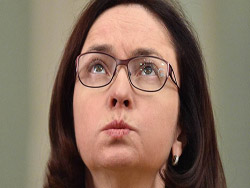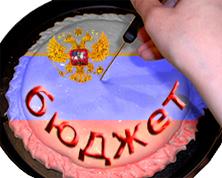
The government is preparing alternative versions of the main parameters of the Federal budget for 2017-2019 in addition to developed by the Ministry of Finance this summer. Alternatives is three. The first assumes only the increase in VAT, the increases in income taxes, and the third only increase in the emission of public debt. It is proposed to introduce different terms of tax increases — from 2017 or 2018. All versions will contain the norm of the dividend payments of state companies to the budget in the amount of 50%, reduce subsidies for state companies and state corporations, the growth threshold or the cancellation fees to the Pension Fund and social insurance Fund. The choice between the options will occur on October 3-4.
Kommersant became known the details of the discussion in the government and the presidential Administration budget construction for 2017-2019. In General, they were identified at a meeting with Russian Prime Minister Dmitry Medvedev on 21 September President Vladimir Putin on September 22 and feature Prime Minister’s instructions, the Ministry of Finance, Ministry of economy, Ministry of labor and Ministry of energy. Most of them, according to Kommersant’s sources in the White house, has the deadline of 27 September (instruction to imagine the completion of “big oil and gas maneuver” — September 30). Today it was reported the meeting on budget issues with the President, Kommersant’s sources talking about a meeting on the same topics, the Prime Minister, the results have not been declared. October 3-4, to be held the final meeting of the Commission on budget projections, the final parameters of the budget for 2017-2019 must fall on 5 October, at the Cabinet meeting — 6 October.
Recall that the baseline version of this document prepared by the Ministry of Finance in August 2016. It is based on invariability of the tax regime until 2018, rated to limit Federal spending through 2019 level of 2016 and a budget deficit of 3.2% of GDP in 2017, with subsequent annual reduction by 1 percentage point per year and the possibility of compliance of the Central Bank target for inflation of 4% in previously to declare the parameters. The Ministry of Finance and economy Ministry was instructed to submit alternative options with a large budget deficit, covered or increase in the emission of public debt, or the growth of personal income tax or increasing VAT. According to “Kommersant”, now the options are not selected. In addition, while the White house focused on the concessions departments for the correction of the 2016 budget.
The option of increasing personal income tax the most well-known — recall that we are talking about a tax increase on incomes over a certain level to 20% with preservation of the preferential rate of 13% for the most part wages below the median income in Russia (in fact, we are talking about a rate of 20% with a deduction, not a tax on high salaries”). Earlier, the Finance Ministry is inclined to its increase in 2018, technically it fits into the alternative budget, the deficit in 2017 can be covered with funds from the national welfare Fund. Now personal income tax, municipal tax, a new status when the change is not obvious.
The option of increasing the VAT is also not determined by date. According to “Kommersant”, the meeting last week was discussed and the option of an immediate (January 2017) growth of VAT to 20% and pending — 2018. Against increasing VAT, according to interlocutors of “Kommersant” in the government, the head of the Central Bank Elvira Nabiullina: the increase in tax rates will lead to an instant jump in inflation — it is the price almost all at once, unlike the dollar.
The option of rising borrowing most simple. We will remind, according to preliminary estimates of the Ministry of Finance in mid-September, net borrowings via OFZ in the baseline budget projections are about 1 trillion rubles per year in 2017-2019 years, then it all depends obviously from the capacity of the internal public debt market (and the prospects of pension savings — see “Kommersant” on September 29) and from interest rates on loans. Issue OFZ — medium preinflation less than the increase of taxation.
Regardless, the basic version or one of three additional, part of the new budget decision has already de facto accepted. This increase in the rate of transfer by state-owned companies dividends to 50% of the profits (as well as all profits of the FSUEs) and the reduction of Federal transfers to state corporations and state-owned companies “in the amount unused of temporary funds”. In addition, increasing the size of the payment for use of water biological resources and for the use of Federal forests. In addition, the Ministry of Finance, Ministry of economy and the Ministry of labor must approve the size and date of growth of tariffs of siperia to the Pension Fund in excess of the current threshold and enter payments “above threshold” in the social insurance Fund. Most likely, this is an increase from 2017-2018 total burden on employers in case of refusal to change the tariffs.








